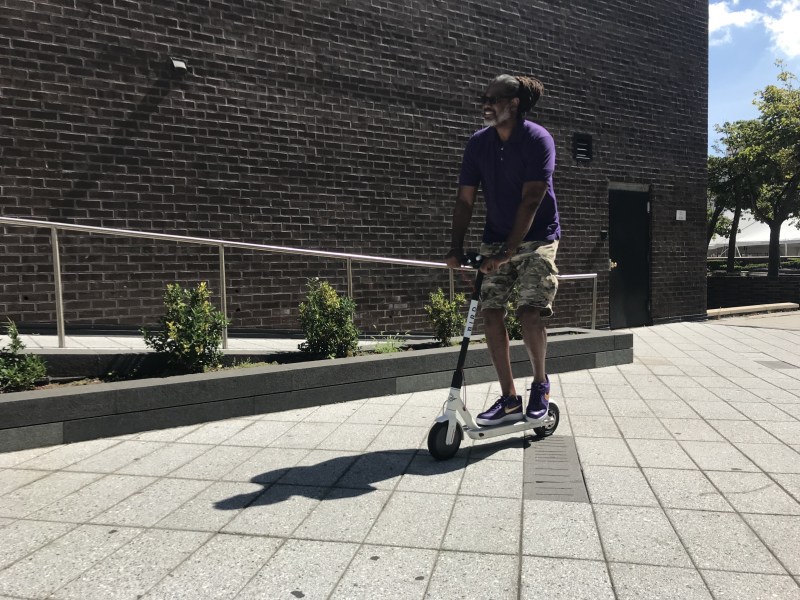How many e-scooter riders have to die before cities realize they can't just ignore their safety?
Another e-scooterer was killed last week in Washington, D.C. — the third such fatality in just over a month. The death rate on shared e-scooters is now six times worse than the death rate for bike share systems.
E-scooters, backed by billions in venture capital, have been in U.S. cities for just over a year now. Bird claims 10 million rides. And its rival, Lime, claims 11.5 million. But cities have done little to ensure riders' safety — scooters can't ride on sidewalks, so their users are forced into heavy traffic in urban areas, where there are few protected bike lanes.
Carlos Sanchez-Martin, 20, was the latest victim, struck and and fatally run over by an SUV driver as he tooled around on a Lime e-scooter in the DuPont neighborhood. His death followed the Sept. 3 roadway death of 24-year-old Lime rider Jacoby Stoneking in Dallas and the Aug. 19 killing of 21-year-old Jessica Summers on a private e-scooter. The driver who ran her over was high on heroin, police said.
Even excluding the Cleveland death, the death rate on shared Lime and Bike e-scooters is roughly one per 10.75 million trips. There have been just two bike share deaths nationwide, making the death rate roughly one for every 61.5 million trips, though there have been many more bike share trips since those stats were published in 2017 — with no additional deaths. (Note: This figure does not include two Citibike riders who were killed in a terrorist attack in New York in 2017.)
Cities are in a difficult position as private companies introduce new transport modes that cry out for changes to the physical infrastructure.
"The scooters are not necessarily compatible with what’s going on the sidewalk. We need to probably move the scooters to the bike lanes," said Arizona State University urban planning Professor David King. "We’re having a hard time getting bike lanes built for bikes."
The "hard time" likely comes from local Department of Transportation officials in car-centric cities. Many such agencies feel pressure to keep car traffic flowing and to maintain on-street car storage in favor of a bike lane.
But scooters could change that equation by creating so much demand for safety that cities would be forced to heed the call. New York, for example, is wrestling with that very question right now, as Lime and Bird pursue legalization.
"If scooters came to New York it would increase the number of people that want protected bike lanes," Lime's Chief Programs Officer (and former Seattle DOT commissioner) Scott Kubly told my Streetsblog colleague Gersh Kuntzman in July. "I also know how hard they are politically. When we found that some [Lime] riders in San Francisco were riding on the sidewalk, we asked why. They said they didn’t feel safe in the street. We asked, 'If you had a protected bike lane, would you feel safe.' And the vast majority gave it a hard yes. ... Scooter riders want the same protection that bikers do."
Until then, though, U.S. cities are saying they want to support sustainable transportation such as e-scooters, but then aren't willing to make the tradeoffs to truly make the roadways safe for all modes of transportation. In the meantime, e-scooter riders' lives hang in the balance.
For cities to adopt bikes, and e-bikes and e-scooters on their streets, bike lanes will be needed, King thinks. And in major cities where a lot of people are using these modes, there will likely be a need for wider bike lanes, he said.
Oh, and smooth roadways: Some data shows e-scooters are causing an uptick in injuries, partly because their small wheels require good pavement.
"There’s potholes everywhere," he said. "That’s going to be tough to maintain."





